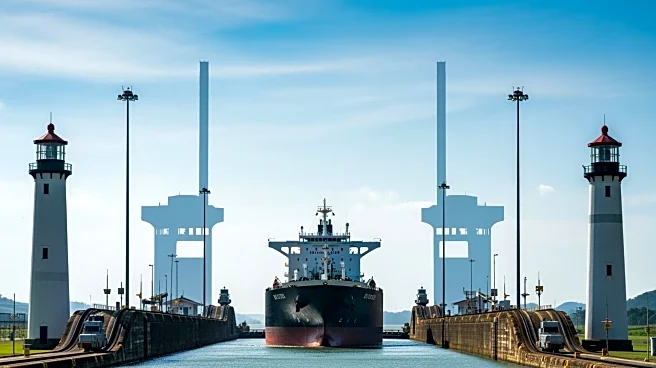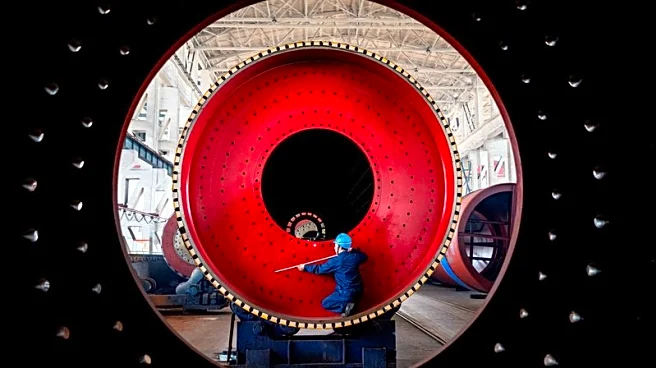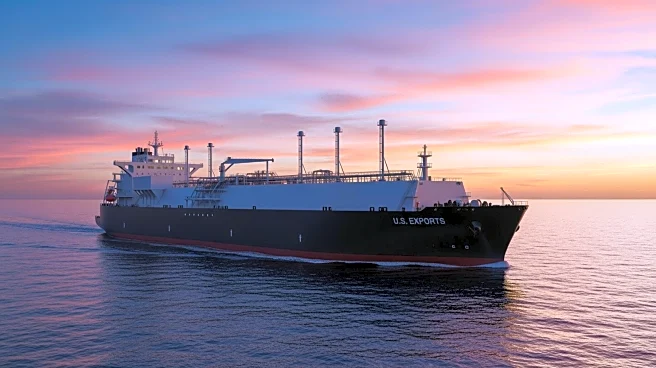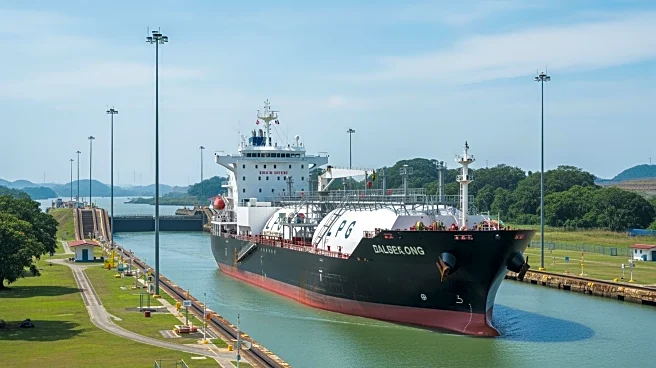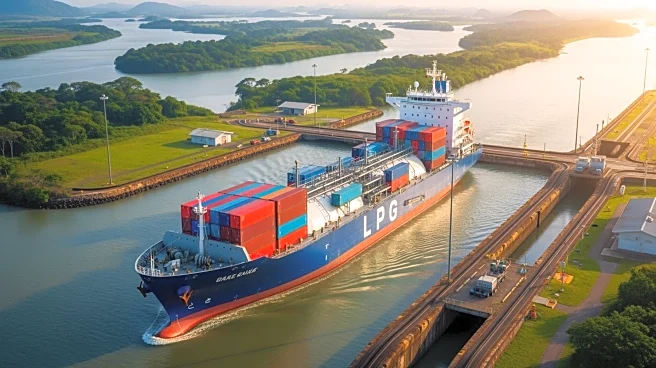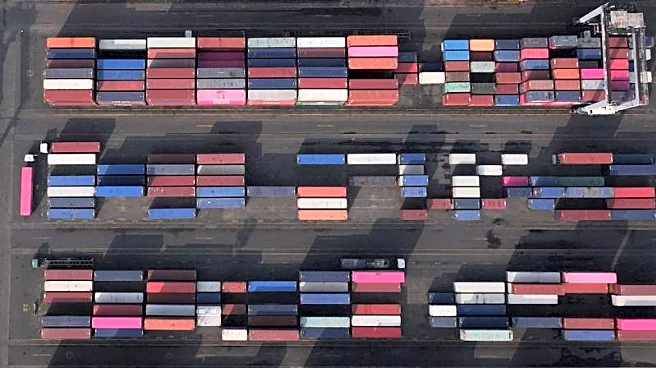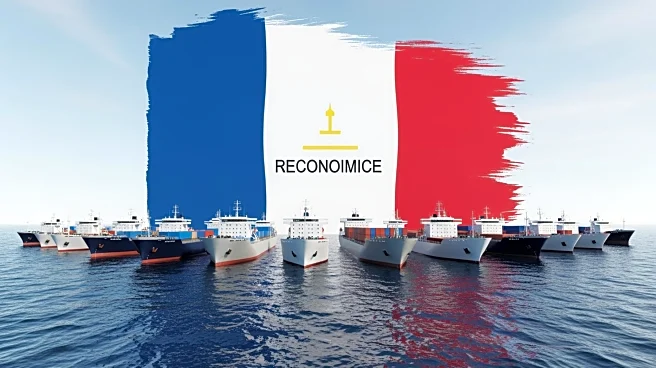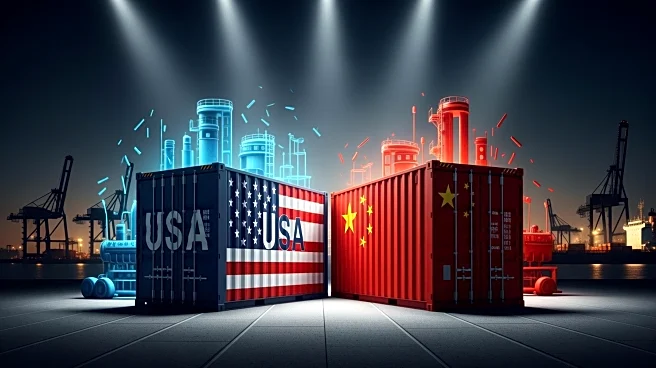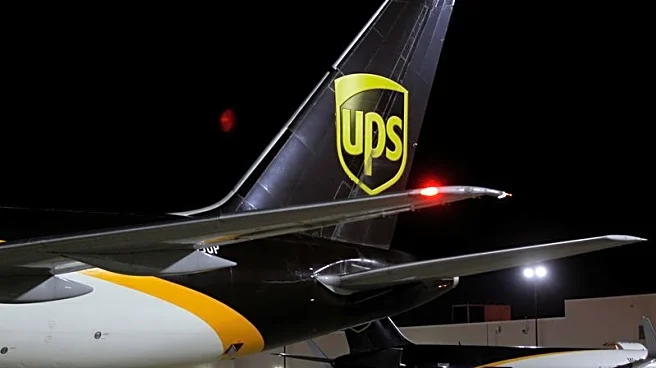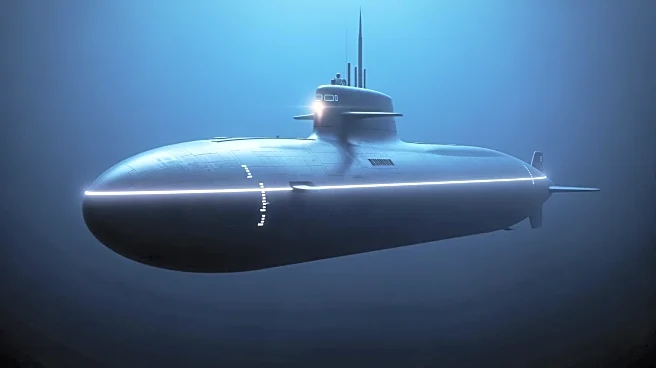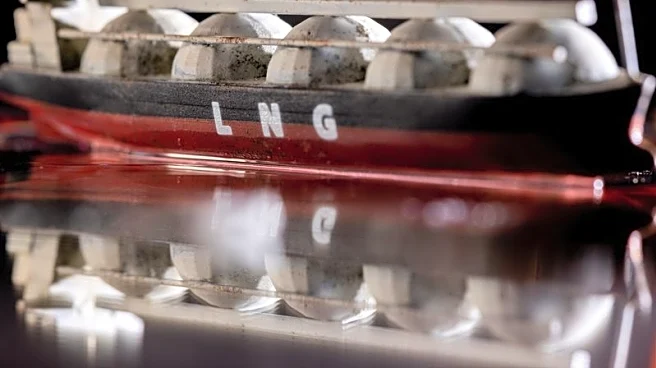What's Happening?
The Panama Canal Authority is focusing on increasing the transit of liquefied petroleum gas (LPG) vessels to counteract a predicted decline in global trade. The canal, which connects the Pacific and Atlantic oceans, saw a 14% revenue increase to $5.7
billion in the last fiscal year, with a 19% rise in transits, largely due to LPG and container ships. The canal's administrator, Ricaurte Vasquez, highlighted the growing importance of LPG, projecting its value to rise over the next two decades. The canal's share of U.S. LPG exports to Asia has rebounded to over 95%, recovering from a previous dip caused by drought-induced restrictions. The Authority is also exploring the construction of a 2-million-barrel-per-day LPG pipeline in the canal zone, aiming for completion by 2030. Additionally, the canal is adapting to changes in grain flows, such as increased Chinese soybean purchases, which could further benefit its operations.
Why It's Important?
The Panama Canal's strategic adjustments are crucial for maintaining its economic viability amid shifting global trade dynamics. By capitalizing on the growing LPG market and adapting to changes in agricultural trade, the canal aims to offset anticipated revenue declines due to reduced cargo volumes. This strategy is significant for U.S. exporters, particularly in the energy and agricultural sectors, as it ensures continued access to vital Asian markets. The canal's efforts to enhance infrastructure, including the proposed LPG pipeline, reflect a broader trend of adapting to geopolitical and environmental challenges. These developments could influence global shipping routes and trade policies, impacting stakeholders across the maritime industry.
What's Next?
The Panama Canal Authority is in the process of selecting companies to build and operate two new ports within the Canal Zone, with completion targeted for 2029. The pre-qualification process for these projects is expected to conclude early next year. Additionally, the ambitious Rio Indio reservoir project, aimed at securing freshwater for the canal, is slated for completion by 2031. These infrastructure projects, requiring an estimated $8.5 billion investment over the next decade, are critical for the canal's long-term sustainability and capacity to handle increased traffic. Stakeholders, including U.S. companies, are likely to monitor these developments closely, given their potential impact on trade routes and market access.
